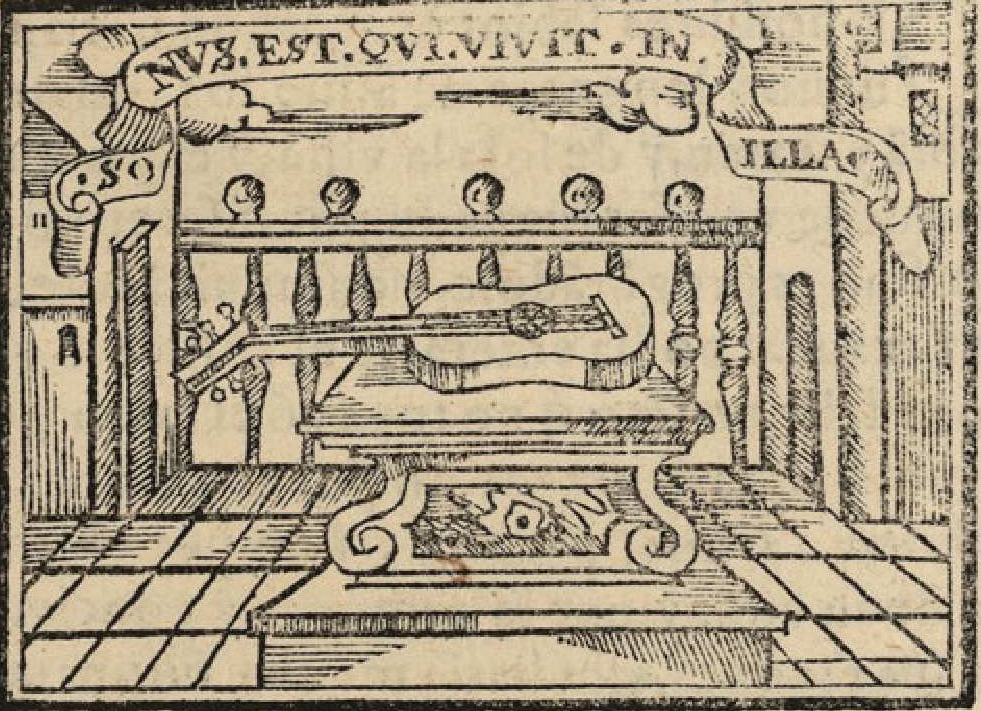Vihuela on a table. Covarrubias, Emblemas morales
(1610) - Sebastián de Covarrubias Orozco, Emblemas morales.
instrument: vihuela de mano | century: 17cent/1/early | catalogue nº: 17-116

Artwork
Creator Covarrubias y Orozco, Sebastián de
Medium Artwork: Woodcut
Location
City Madrid | Region Madrid | Old kingdom Castile
Characteristics
| Body Waisted | Strings 6 strings | Neck Medium | Pegbox R/Angled channels |
| Bridge Fixed | Frets No | Back Flat | Pegs Lateral |
| Technique None |
Commentary
SOURCE
Sebastián de Covarrubias Orozco, Emblemas morales. Madrid: Luis Sanchez, 1610, fol. 131, emblem 31
INSTRUMENT
Characteristic of a 16th-century vihuela. Incurved waists, flat bridge and circular soundhole halfway along the body length. Some details are not clear, probably because the print is small (70 x 52 mm). The instrument appears to have 6 strings at the bridge, but only five on the neck, there are no frets, and only six pegs.
Ward comments that the viguela lies on the table, as if in the place of honour (ward1953, 17)
The text reads:
Por bien que la viguela esté templada
Y hecha de un marfil blanco y pulido
No siendo de algun músico tocada
Mal se puede juzgar de su sonido:
El hombre sabio habla poco, o nada,
Empero preguntado y requerido:
Si le tocais con mano artificiosa,
Causaros ha harmonia deleitosa.
Though the vihuela were tuned / And made of white and polished ivory / and not being played by any musician / its sound could only be judged badly /The wise man speaks little or not at all / nevertheless, aked and required /
If you play it with a skillful hand, / it will produce you delightful harmony.